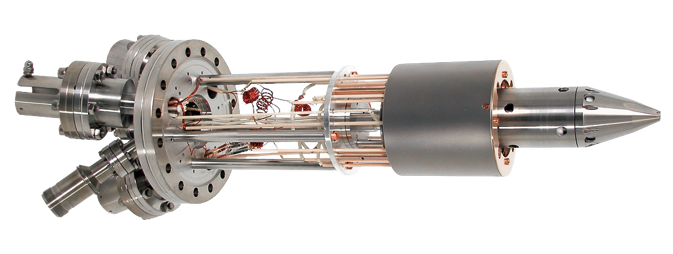SPLEED
Spin polarized LEED detector:
The FOCUS SPLEED
SPLEED is closely related to LEED. For certain materials, certain LEED spot intensities (like e.g. the W(200) spots) are strongly modulated by the spin polarization of the impinging electron beam. The meant polarization sensitivity is caused by spin-orbit interaction. This effect can be used to detect the polarization of electrons in a manner similar to the Mott detector. In case of the FOCUS SPLEED a W(100) crystal is used. If equipped with four counters both transversal spin components of the incoming electron beam can be analyzed. The advantage of SPLEED compared to a Mott detector is the much better sensitivity (Sherman function, figure of merit), the low scattering energy and the related low voltages to be applied. The drawback of the SPLEED is its need to get prepared at least once a day (under best UHV conditions).
Our SPLEED detector has been characterized using incident polarized electrons with known polarization. The maximum asymmetry has been found at 101 eV scattering energy. The useful life time of the analyzer is about two and a half hours after one CO flash (@1500 K), with 10% decay of the Sherman function mainly due to hydrogen and CO adsorption on the W(100) crystal. Care must be taken to minimize magnetic stray fields which may introduce artificial asymmetry in a certain direction. A Sherman function 0,27 and a reflectivity (I/Io) of 0,03 has been obtained at 101 eV scattering energy. The SPLEED detector has been applied in the investigation of a spin reorientation transition of ultra-thin Fe films on W(110) upon CO adsorption /1/.
The SPLEED combined with a dedicated entrance lens used as SEMPA detector:

/1/ Dehong Yu et al., Surface Science 601 (2007), p. 5803–5808
